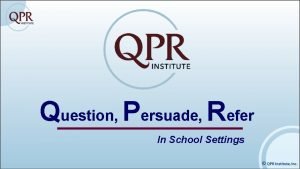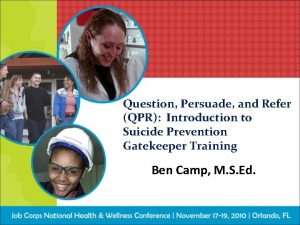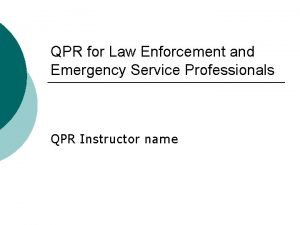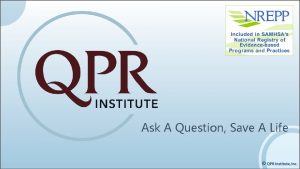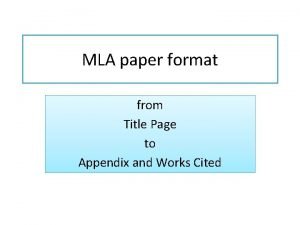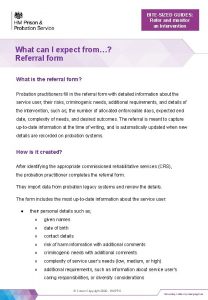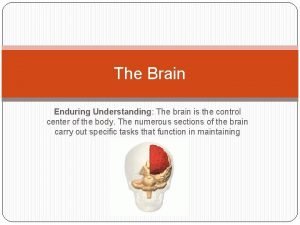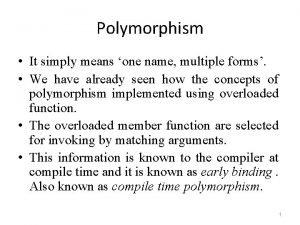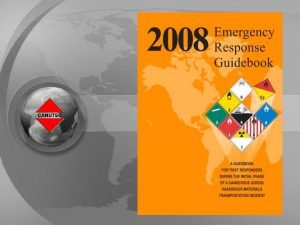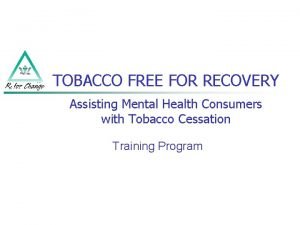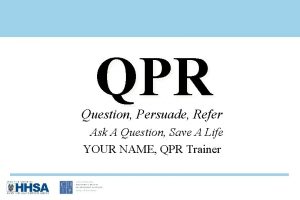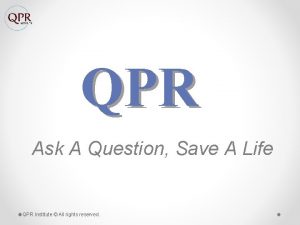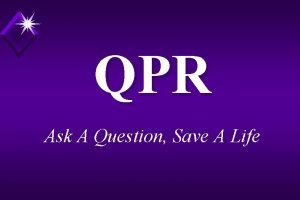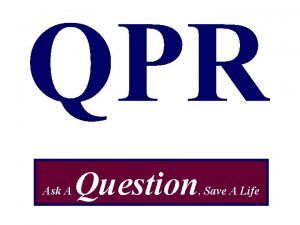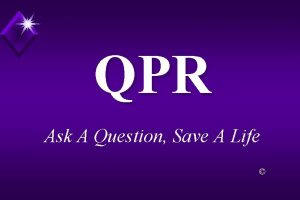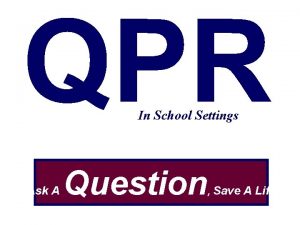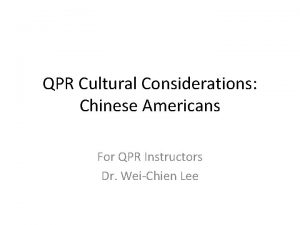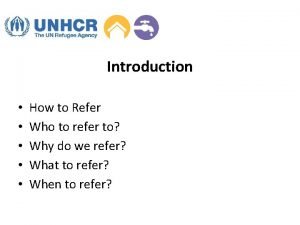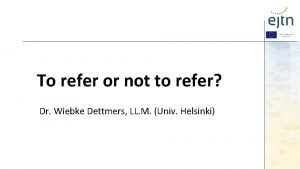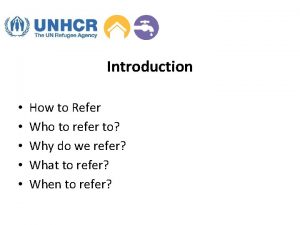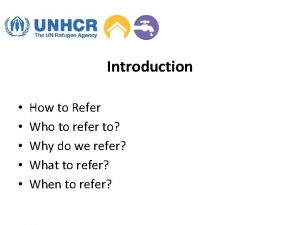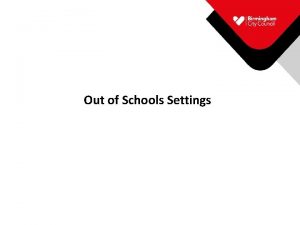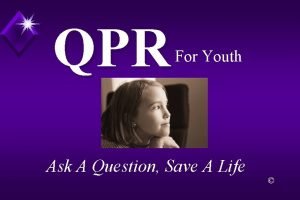Question Persuade Refer In School Settings QPR In






























- Slides: 30

Question, Persuade, Refer In School Settings

QPR In School • QPR is not intended to be a form of counseling or treatment. • QPR is intended to offer hope through positive action.

QPR In School Myths and Facts About Suicide • Myth • Fact No one can stop a suicide, it is inevitable. If a young person in a crisis gets the help they need, they will probably never be suicidal again. • Myth Confronting a person about suicide will only make them angry and increase the risk of suicide. Asking someone directly about suicidal intent lowers anxiety, opens up communication and the risk of an impulsive act. • Fact

QPR In School Myths And Facts About Suicide • Myth Only experts can prevent suicide. • Fact Suicide prevention is everybody’s business, and anyone can help prevent the tragedy of suicide. • Myth Suicidal young people keep their plans to themselves. • Fact Most suicidal people communicate their intent sometime during the week preceding their attempt.

QPR In School Myths And Facts About Suicide • Myth Those who talk about suicide don’t do it. • Fact People who talk about suicide may try, or even complete, an act of self-destruction. • Myth Once a person decides to complete suicide, there is nothing anyone can do to stop them. • Fact Suicide is the most preventable kind of death, and almost any positive action may save a life.

QPR In School Myths And Facts About Suicide • Myth If a suicidal youth tells a friend, the friend will access help. • Fact Most young people do not tell an adult. Good Friends Don’t Keep Deadly Secrets!

QPR In School Suicide Clues And Warning Signs The more clues and signs observed, the greater the risk. Take all signs seriously.

QPR In School • • • Strongest Predictors Previous suicide attempt Current talk of suicide/making a plan Strong wish to die/preoccupied with death(i. e. , thoughts, music, reading) Depression (hopelessness, withdrawal) Substance use Recent attempt by friend or family member

QPR In School Verbal Clues: • “I’ve decided to kill myself. ” • “I wish I were dead. ” • “I’m going to commit suicide. ” • “I’m going to end it all. ” • “If (such and such) doesn’t happen, I’ll kill myself. ”

QPR In School Indirect or “Coded” Verbal Clues: • “I’m tired of life, I just can’t go on. ” • “My family would be better off without me. ” • “Who cares if I’m dead anyway. ” • “I just want out. ” • “I won’t be around much longer. ” • “Pretty soon you won’t have to worry about me. ”

QPR In School Behavioral Clues: • Past suicide attempt • Getting a gun or stockpiling pills • Giving away prized possessions • Impulsivity/increased risk taking • Unexplained anger, aggression, irritability • Self-destructive acts (i. e. , cutting) • Chronic truancy, running away • Perfectionism

QPR In School Situational Clues: • • • Being expelled from school or fired from job Family problems or alienation Loss of any major relationship Death of a friend or family member, especially if by suicide Diagnosis of a serious or terminal illness Financial problems (either their own or within the family) Sudden loss of freedom or fear of punishment Feeling embarrassed or humiliated in front of peers Victim of assault or bullying

QPR In School Other Youth Related Clues: • Change in interaction with family and friends • Recent disappointment or rejection • Sudden decline or improvement in academic performance • Physical symptoms: eating disturbances, changes in sleep patterns, chronic headaches, stomach problems, menstrual irregularities • Increased apathy

QPR In School Tips for Asking the Suicide Question • If the young person is reluctant, be persistent • Talk to the person alone in a private setting • Allow the person to talk freely • Give yourself plenty of time • If in doubt, don’t wait, ask the question • Have your resources handy: QPR Card, community resources phone numbers and know your school protocol for handling suicide risk Remember: How you ask the question is less important than that you ask it •

Q QUESTION HOW TO ASK THE SUICIDE QUESTION Less Direct Approach: • “Have you been unhappy lately? ” • “Have you been very unhappy lately? ” • “Have you been so unhappy lately that you’ve been thinking about ending your life? ” • Do you ever wish you could go to sleep and never wake up? ”

Q QUESTION HOW TO ASK THE SUICIDE QUESTION Direct Approach: • “You know, when people are as upset as you seem to be, they sometimes wish they were dead. I’m wondering if you’re feeling that way, too? ” • “You look pretty miserable, I wonder if you’re thinking about suicide? ” • “Are you thinking about killing yourself? ”

WAYS NOT TO ASK THE QUESTION “You’re not thinking about suicide are you? ” OR “You’re just kidding about killing yourself, right? ” Asking in this way encourages a negative response from the young person you are talking with. It may also imply that your are frightened by the intensity of their feelings. Similarly, be aware of your own non-verbal clues.

P PERSUADE FOR QPR IN SCHOOL SETTINGS • Listen to the problem and give them your full attention • Remember, suicide is the solution to a perceived insoluble problem. Suicide is not the problem. • Do not rush to judgment • Offer hope in any form

P PERSUADE continued… Then ask: • “Are you willing to talk to your counselor within the next 10 -15 minutes? ” • If they say “yes” ask them, “Will you promise me not to kill yourself in between now and the time you talk to your school counselor? ” • Continue to monitor them closely until the are with the counselor.

P PERSUADE continued… • “Will you go with me to talk with your school counselor? ” • “Would you like me to tell your school counselor that you would like to talk to him or her? ”

P PERSUADE continued… • “If you are unable or unwilling to talk to your counselor, I want you to know that I care enough about you that I will let them know. ” NOTE: The school counselor and/or administrator must be informed if you believe you are seeing suicidal clues or warning signs from a student.

R REFER FOR QPR IN SCHOOL SETTINGS Suicidal young people often believe they cannot be helped, so you may have to do more.

R REFER FOR QPR IN SCHOOL SETTINGS The best “referral” involves taking the person directly to see the school counselor.

R REFER FOR QPR IN SCHOOL SETTINGS The next best “referral” is when the student wants you to talk to the counselor first, or when they agree to talk to the counselor on their own within the immediate future. The young person should be monitored closely in the interim. If the person refuses help, you may need to get others involved.

R REFER FOR QPR IN SCHOOL SETTINGS The third best option is to make sure the student is safe, is under observation by an adult, and then you tell the school counselor the warning signs you have observed.

NOTE: You are not being disloyal or violating a trust when you share of a young person’s suicidality with a school counselor or administrative staff. You are being disloyal if you do not!

For Effective QPR • Say: “I want you to live, ” or “I’m on your side and we’ll get through this. ” • Communicate with the school counselor and administration. • Get Others Involved. Ask the person who else might help. Family? Friends? Teachers? Brothers? Sisters? Pastors? Priest? Rabbi? Bishop? Physician?

For Effective QPR Cont. • Join the Team. Offer to work with other school personnel and concerned members of the community members to help reduce youth suicide. • Follow up with a visit, a phone call, a card, or in whatever way feels comfortable to you, to let the young person know you care about what happens to them. Caring may save a life.

REMEMBER Since almost all efforts to persuade a young person to live instead of attempt suicide will be met with agreement and relief, don’t hesitate to get involved.

When you apply QPR, you plant the seeds of hope. Hope helps prevent youth suicide.
 Costa question levels
Costa question levels Qpr training quiz answers
Qpr training quiz answers Qpr gatekeeper quiz answers
Qpr gatekeeper quiz answers Qpr
Qpr Qpr enterprise architect
Qpr enterprise architect Hinge theorem examples with answers
Hinge theorem examples with answers Qpr logo
Qpr logo Qpr enterprise architect
Qpr enterprise architect Qpr training quiz answers
Qpr training quiz answers Present simple question words
Present simple question words Closed question example
Closed question example Contoh open ended question
Contoh open ended question Factor isolating question about social media
Factor isolating question about social media Direct and indirect questions
Direct and indirect questions Examples of compelling and supporting questions
Examples of compelling and supporting questions Compelling question example
Compelling question example What does the underlined word mean?
What does the underlined word mean? Appendix research sample
Appendix research sample Refer and monitor
Refer and monitor To refer to casually or indirectly
To refer to casually or indirectly Cost benefit analysis quiz
Cost benefit analysis quiz The left
The left A cluster of skills refer to
A cluster of skills refer to One name multiple form refers to
One name multiple form refers to Why do we refer
Why do we refer Erg blue section
Erg blue section Causal attributions refer to
Causal attributions refer to People often refer to taxes
People often refer to taxes Ask advise refer
Ask advise refer Past simple refer
Past simple refer What are the important elements of medical terms?
What are the important elements of medical terms?

